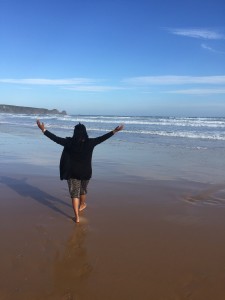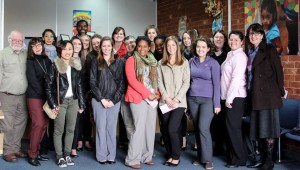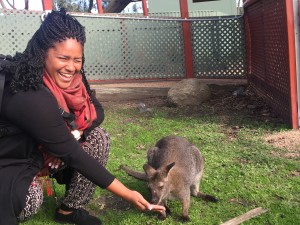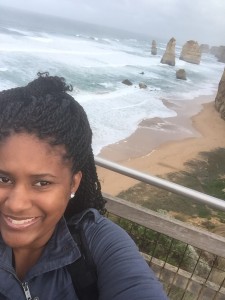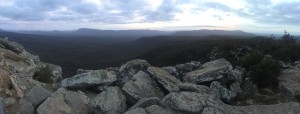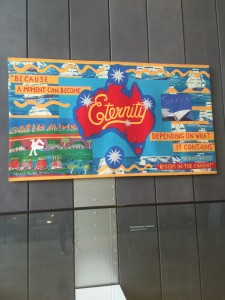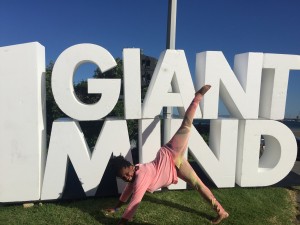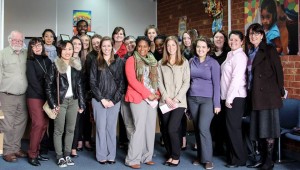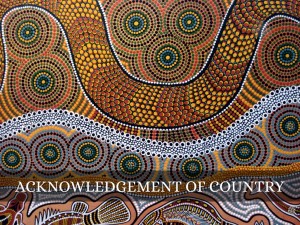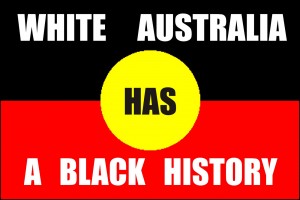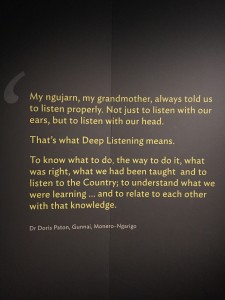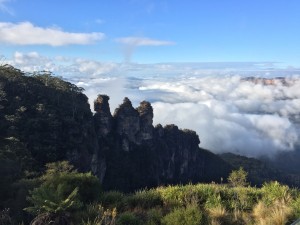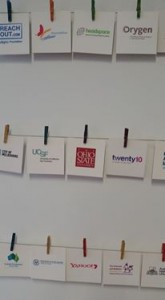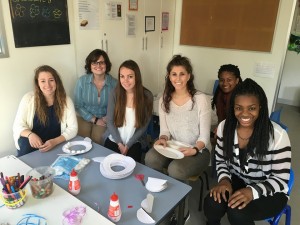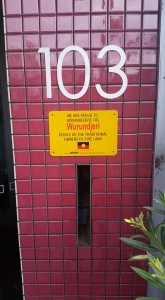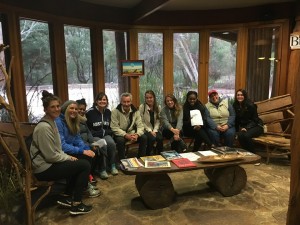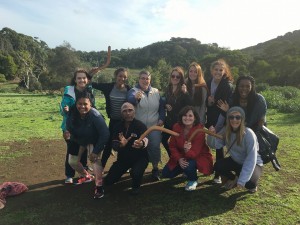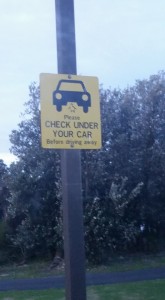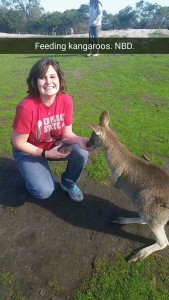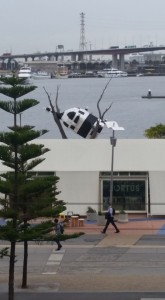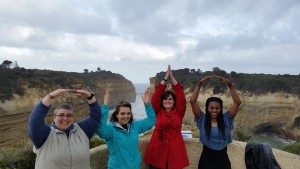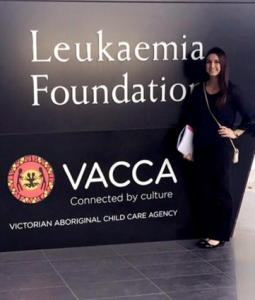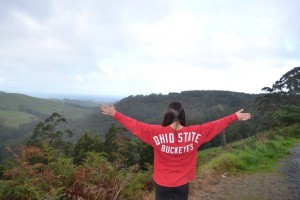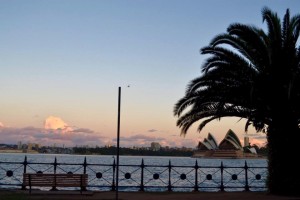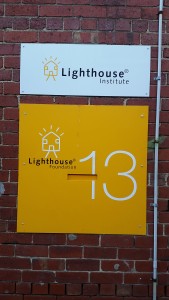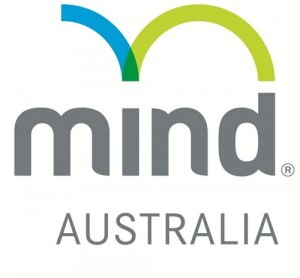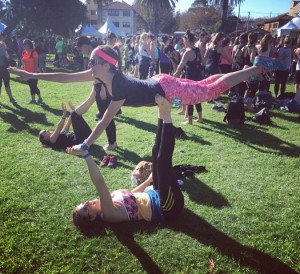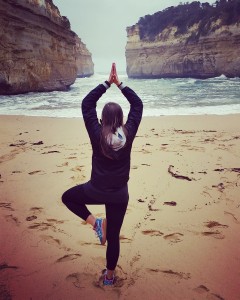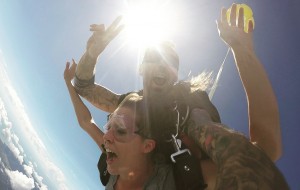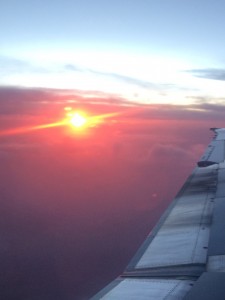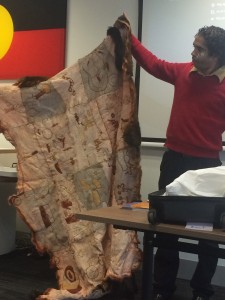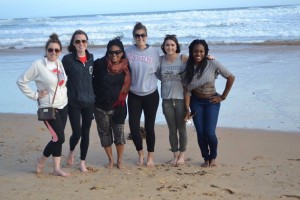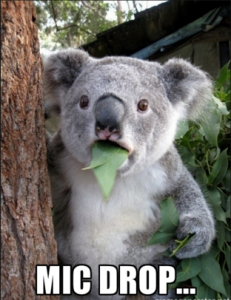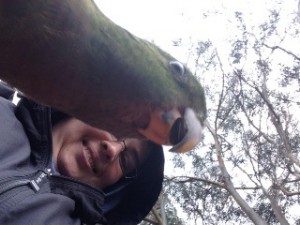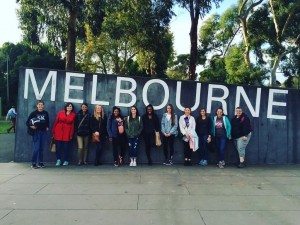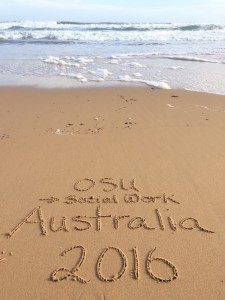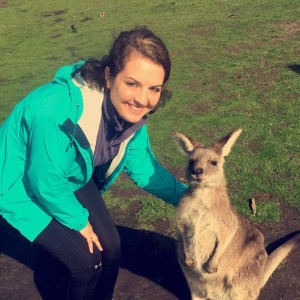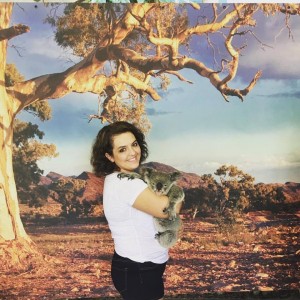I’ll be the firs t to admit that the song “G’Day G’Day” by Slim Dusty has been stuck in my head since the first time I heard it on our Great Ocean Road Trip, but that’s only one gem that I took away from our phenomenal trip to Australia. Two months ago, I was sitting in Columbus thinking, “Soon I am going to be traveling halfway around the globe on a plane for 16 hours with 14 strangers? That sounds crazy!” Now, after all is said and done, here I am sitting in Columbus again, assured that I am a better person because of following through on this crazy idea. I can’t imagine having a better trip with any other group of people!
t to admit that the song “G’Day G’Day” by Slim Dusty has been stuck in my head since the first time I heard it on our Great Ocean Road Trip, but that’s only one gem that I took away from our phenomenal trip to Australia. Two months ago, I was sitting in Columbus thinking, “Soon I am going to be traveling halfway around the globe on a plane for 16 hours with 14 strangers? That sounds crazy!” Now, after all is said and done, here I am sitting in Columbus again, assured that I am a better person because of following through on this crazy idea. I can’t imagine having a better trip with any other group of people!
I am currently a fourth-year neuroscience major at the Ohio State University with a minor in disability studies, as I hope to be a pediatric occupational therapist in the future. I spend a lot of time learning about and helping others with various intellectual and developmental disabilities, since that is my passion. While it is absolutely excellent to gain experience directly pertaining to my future career goals, it can be beneficial to think outside of the box. This study abroad program through the College of Social Work allowed me to explore other aspects of childcare through the eyes of other helping professions that I may work with one day. Experience in a variety of areas of childcare, especially within other cultures, can help me thrive in my future practice. Being in Australia allowed me to learn about their ideas in childcare, what works for them, what does not work for them, what the United States could change and how they could change, etc. Taking the time to understand the practices of other cultures can lead to a more well-rounded practice for everyone because as they say, two heads is better than one.
The mental health aspect of this trip really stuck with me. I know that early intervention is key to helping children with intellectual and developmental disabilities, but this can also apply to helping those with mental health issues. Even if a child does not show signs of struggling with mental health issues, if they do not grow up in a safe environment with healthy relationships and basic necessities, this could lead to mental health issues later in life. I have noticed that Australia really prioritizes prevention over treatment, while the United States is the opposite. For example, we visited an organization called Reach. Reach’s goal is to help young people live a safe, healthy, resilient, and fulfilling life. The organization provides workshops for children as young as ten years old. In my opinion, this is huge! Starting intervention so early in a child’s life can help them keep their life on track before it even goes off track! Reach provides workshops at their own facility, but they also provide workshops at schools, which is great for children who may not even realize that they are really struggling yet.
Another organization that stuck out to me was Berry Street. When we visited this organization, we were able to help out with the playgroups that they offer for parents and children. This playgroup is way more important than it may seem. For those families who have experienced trauma, violence, or who simply do not get to spend much time together for various reasons, this playgroup provides a safe environment for the parents and children to connect. It is beneficial for the children as it gives them a chance to have a healthy interaction with both their parent(s) and other children. The child may not be able to express it, or they may not know it, but the playgroup could serve as a bit of a stress-relief each week. This can be the same for the parents. The parents are able to give their child attention, while also engaging in conversation with other parents, giving them a break from their daily activities. In my future career, I hope to be able to implement some type of mental health awareness, no matter how small. Prevention and awareness can help people of all ages, and starting off with young children can help to set the stage for a healthy life. Educating parents on how to be aware of their child’s mental health could also be useful for prevention at home. Prevention seems to be a technique that is working for Australia, and I would love to see more of that, and be a part of more of that, in the U.S.
During our program we also had the pleasure of learning about Australia’s Aboriginal culture. We spent a lot of time listening and reading about the hardships the Aboriginal people were faced with, and it is unbelievable that these people still struggle in the modern world today. These people were forcefully removed from their lands, separated from their loved ones, and stripped of their cultural identities. When we visited VACCA, we discussed how so many Aboriginal languages have been lost and that only 30-60 of the languages exist today, which is devastating. An aspect of Australia that I really admired was that although the terrible things the Aboriginal people had to endure cannot be undone, Australia apologized. In 2008, the Prime Minister issued a public apology speech to the Aboriginal people. Additionally, in many of the buildings around Melbourne, I noticed that there were plaques hung on the wall either inside or outside the building that acknowledged that the facility is sitting on the land of the Aboriginal people. Like I said, what was done to the Aboriginal people cannot be undone, but at least the people of Australia are taking gracious steps to try to make amends. I wish I saw more of this in the United States pertaining to the Native Americans. While I cannot speak for all of America, I personally do not see as much awareness being spread for the Native American people, nor do I see such apologies.
In addition to VACCA, at the Melbourne Museum we checked out the First Peoples exhibit and in the Grampians we checked out the Brambuk Aboriginal Centre, both of which contained really empowering history. The exhibit and the centre both demonstrated the importance of spirituality, kinship, and hard work in Aboriginal culture. It was amazing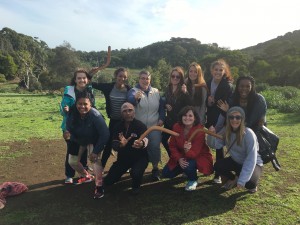 to see all of the hand-crafted tools and weapons made by Aboriginal people too. All of my experiences learning about the Australia’s Aboriginal people showed me how significant it is to respect and be aware of other cultures. W
to see all of the hand-crafted tools and weapons made by Aboriginal people too. All of my experiences learning about the Australia’s Aboriginal people showed me how significant it is to respect and be aware of other cultures. W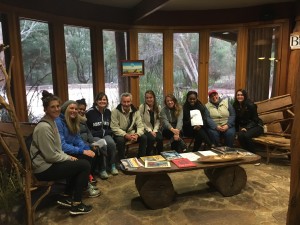 hen fairness and equality are practiced, fewer hardships have to be endured, and this can even prevent struggle and cruelty from occurring. We are all in this world together, so we should all work together to keep it as peaceful and fair as possible.
hen fairness and equality are practiced, fewer hardships have to be endured, and this can even prevent struggle and cruelty from occurring. We are all in this world together, so we should all work together to keep it as peaceful and fair as possible.
Last, but not least, one of the most vital things I learned in Australia is to live in the present moment. Look at your surroundings, listen to the noises, smell the air, and do these things without looking through the lens of a camera, or through a phone screen. That real feeling when you are standing at the top of a mountain looking out at the beautiful sunset, or sitting down on a sandy beach watching as the waves crash ashore is not the same through technology. While I did take a million pictures (not literally…maybe), I reminded myself to put the phone down and take it all in. Who knows if I will ever be back to Australia, so I knew I should absorb as much of its beauty as possible in the present moment. I hope to carry this with me in the future.
This was the perfect program for exploring another area in a neat and interactive way. The more I know, the more I can be of help to others in the future. All of us helping professions will work together after all! I would do this program again in a heartbeat and I would definitely recommend it to others!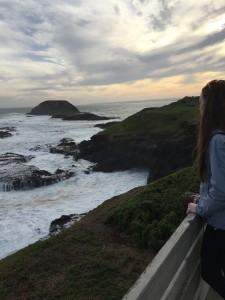
Thanks for all of the laughs, friends, learning opportunities, donuts, beautiful sceneries, and kangaroo selfies Australia. Cheers!
Sam
